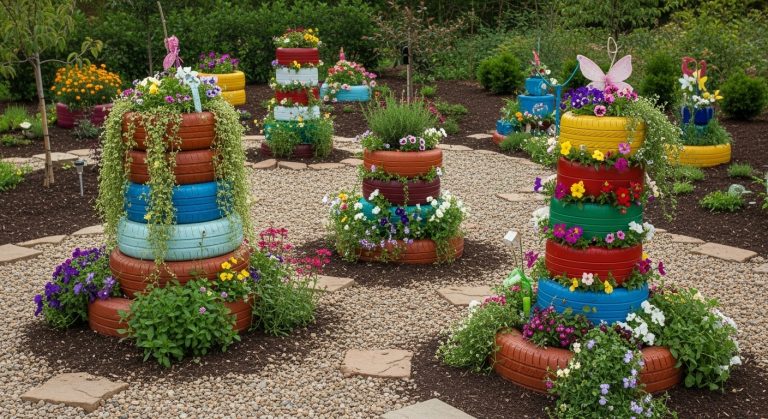California Native Garden Ideas: 15 Creative Ways to Bring Nature Home
There’s something special about a California native garden — it feels wild yet intentional, colorful yet sustainable. You don’t have to be a botanist to appreciate how native plants transform your yard into a living, breathing ecosystem. The hum of bees, flashes of hummingbirds, and that earthy scent after a rare rainstorm — it’s a feeling only native plants can give.
Native gardens are more than just beautiful; they’re a celebration of California’s biodiversity. They conserve water, reduce maintenance, and provide vital habitat for pollinators and birds. Plus, they’re resilient — built to handle the sun, soil, and seasons of the Golden State.
Below are 15 inspiring California native garden ideas that’ll help you design a landscape that’s sustainable, low-maintenance, and undeniably Californian.
1. Create a Drought-Tolerant Native Garden
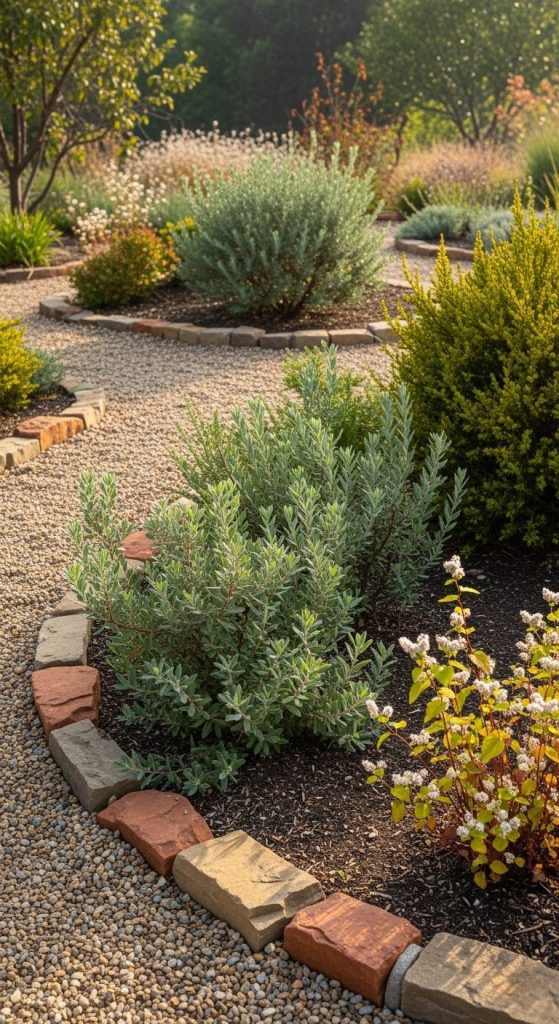
Water is precious, and California natives have mastered survival without much of it. By planting species adapted to local climates — like manzanita, toyon, and buckwheat — you’ll build a resilient, thriving garden.
Pros:
- Saves up to 85% more water than traditional lawns.
- Plants naturally resist drought stress once established.
- Reduces need for irrigation systems.
- Promotes healthier soil and ecosystems.
Cons:
- Young plants still need careful watering during establishment.
- Limited flower color range during the dry season.
Takeaway:
Drought-tolerant doesn’t mean dull — it means smart, sustainable, and beautifully Californian.
2. Replace Lawn with Native Groundcovers

If your lawn guzzles water, swap it for native groundcovers like California fescue, yarrow, or creeping sage. These fill space, reduce erosion, and stay green without constant upkeep.
Pros:
- Cuts mowing and watering almost entirely.
- Attracts beneficial insects and butterflies.
- Softens hardscapes and adds lush texture.
Cons:
- Some varieties can spread aggressively.
- May take a year to fully establish.
Takeaway:
A groundcover garden feels natural and relaxing — a living carpet that changes with the seasons.
3. Design with Native Grasses for Movement
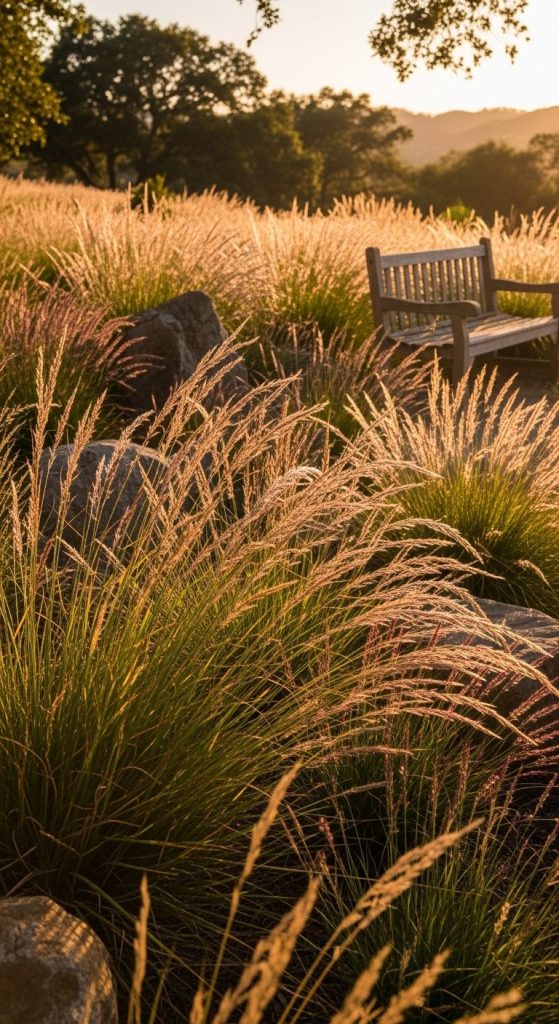
Grasses like deer grass or purple needlegrass bring dynamic texture and gentle motion to your garden. Their golden hues and seed heads look incredible in late afternoon light.
Pros:
- Adds a breezy, natural meadow feel.
- Low maintenance — trim once or twice a year.
- Tolerates heat and poor soil.
Cons:
- Can go dormant and brown in summer.
- Some need room to spread out.
Takeaway:
Grasses bring rhythm and calmness — perfect for balancing bolder native shrubs or flowers.
4. Add Pollinator-Friendly Plants

California native flowers like monkeyflower, penstemon, and milkweed attract bees, butterflies, and hummingbirds — turning your garden into a buzzing paradise.
Pros:
- Boosts local pollinator populations.
- Provides continuous blooms spring through fall.
- Creates movement, sound, and life in your yard.
Cons:
- Some species bloom only seasonally.
- You’ll need to deadhead for repeat flowering.
Takeaway:
Plant with pollinators in mind, and your garden will hum with energy all year long.
5. Mix Evergreen and Deciduous Natives

A balanced garden keeps visual interest year-round. Combine evergreen species like manzanita with deciduous ones like California sycamore for seasonal color and structure.
Pros:
- Keeps your garden alive even in winter.
- Creates layered depth and texture.
- Offers shelter for birds and shade for groundcovers.
Cons:
- Requires thoughtful spacing to balance sunlight needs.
Takeaway:
Diversity keeps a native garden vibrant — think of it as designing for every season.
6. Create a Mediterranean-Style Native Garden

California’s climate mirrors the Mediterranean — warm, dry summers and mild, wet winters. Combine lavender, sage, buckwheat, and manzanita for a natural yet elegant aesthetic.
Pros:
- Naturally cohesive with local conditions.
- Great fragrance and color palette.
- Low water and low maintenance.
Cons:
- Overmixing non-natives can disrupt the ecological balance.
Takeaway:
Mediterranean and California natives go hand-in-hand — effortless beauty that thrives naturally.
7. Build a Native Wildflower Meadow
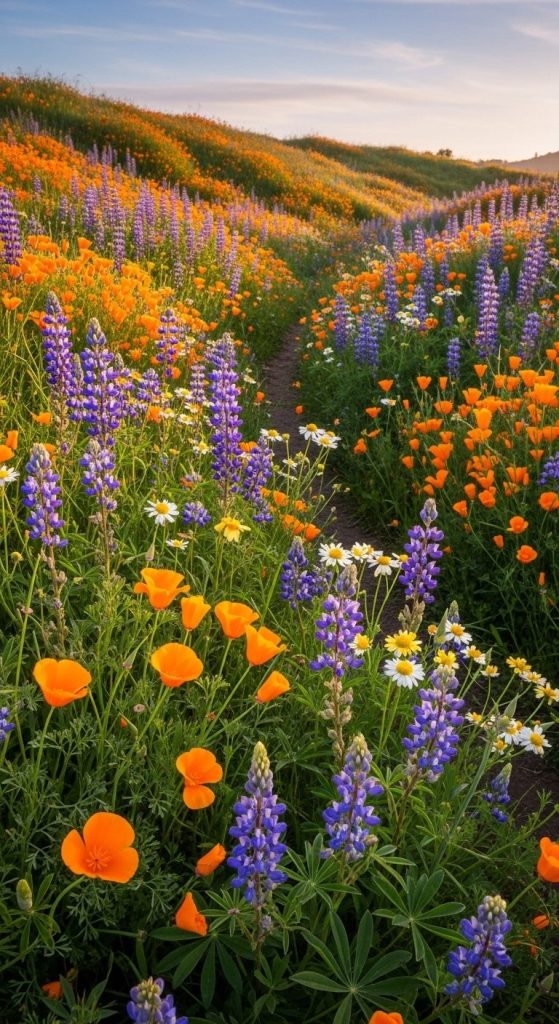
Imagine your backyard bursting with California poppies, lupines, and tidy tips. Wildflower meadows are visually stunning and ecologically powerful.
Pros:
- High pollinator attraction.
- Minimal watering once seeds establish.
- Easy to reseed each year.
Cons:
- Requires initial soil preparation and weed control.
- Some flowers fade quickly in peak summer.
Takeaway:
Wildflower meadows are joyful chaos — low-effort, high-reward bursts of color.
8. Add a Rock Garden with Native Succulents
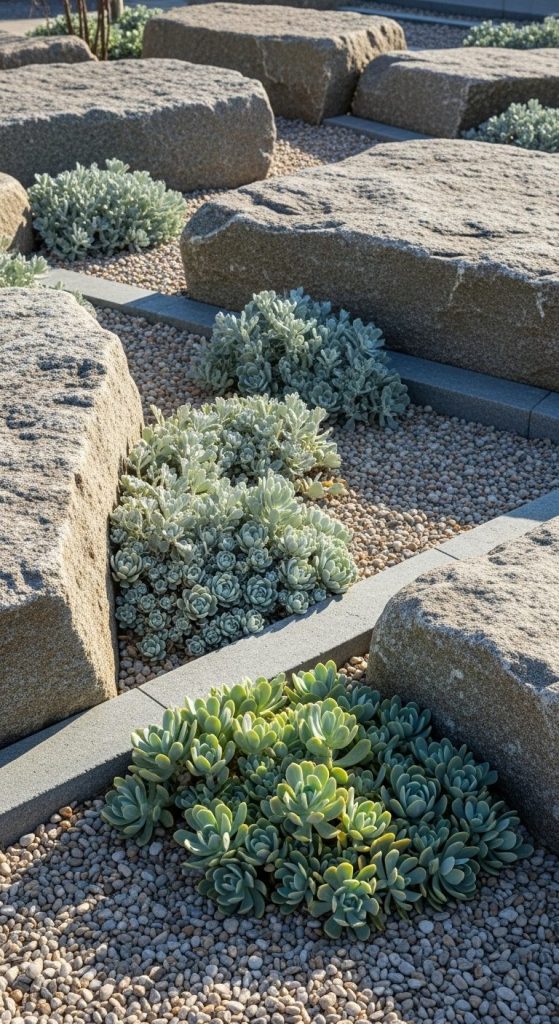
Combine rocks, gravel, and succulents like dudleya, sedum, or chalk dudleya for a drought-tolerant, sculptural design.
Pros:
- Extremely low water needs.
- Provides contrast and visual drama.
- Ideal for small or sloped areas.
Cons:
- Some succulents are sensitive to frost or overwatering.
Takeaway:
Rock gardens are artistic and resilient — proof that less water can mean more beauty.
9. Use Native Shrubs for Privacy and Structure

Native shrubs like coffeeberry, ceanothus, and toyons create natural hedges that feel organic and inviting.
Pros:
- Offers privacy and wind protection.
- Provides berries and nectar for wildlife.
- Evergreen foliage keeps the garden structured.
Cons:
- Takes time to grow dense coverage.
Takeaway:
Forget fences — native shrubs create living walls that grow more beautiful every year.
10. Create a Shade Garden with Woodland Natives
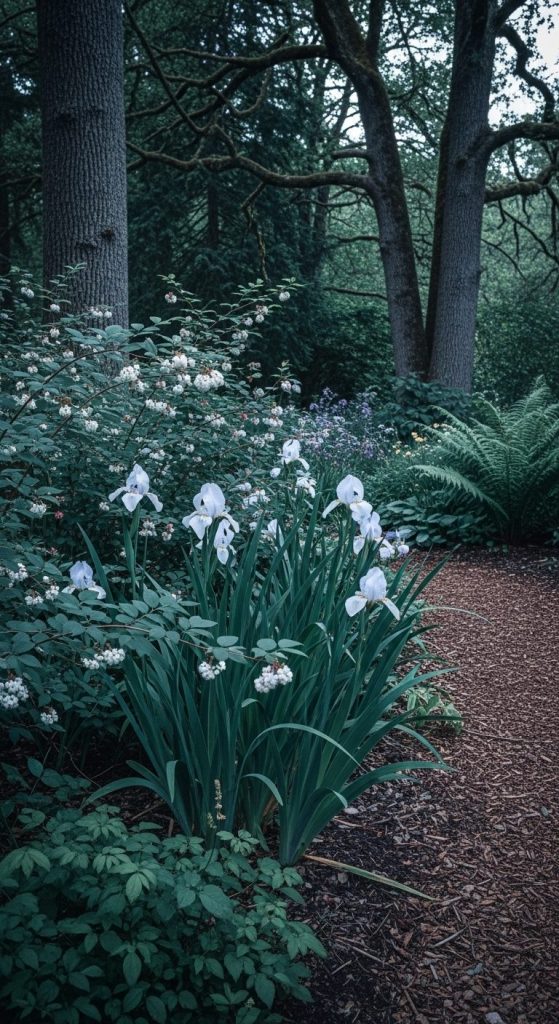
Under trees or on the north side of your home, try shade-tolerant natives like snowberry, ferns, or Douglas iris.
Pros:
- Expands your planting zones.
- Brings lushness to otherwise dry, shady spots.
- Encourages biodiversity beneath trees.
Cons:
- Needs mulch and extra watering until established.
Takeaway:
Even shady corners can thrive when you choose the right local plants.
11. Add Native Trees for Legacy and Shade
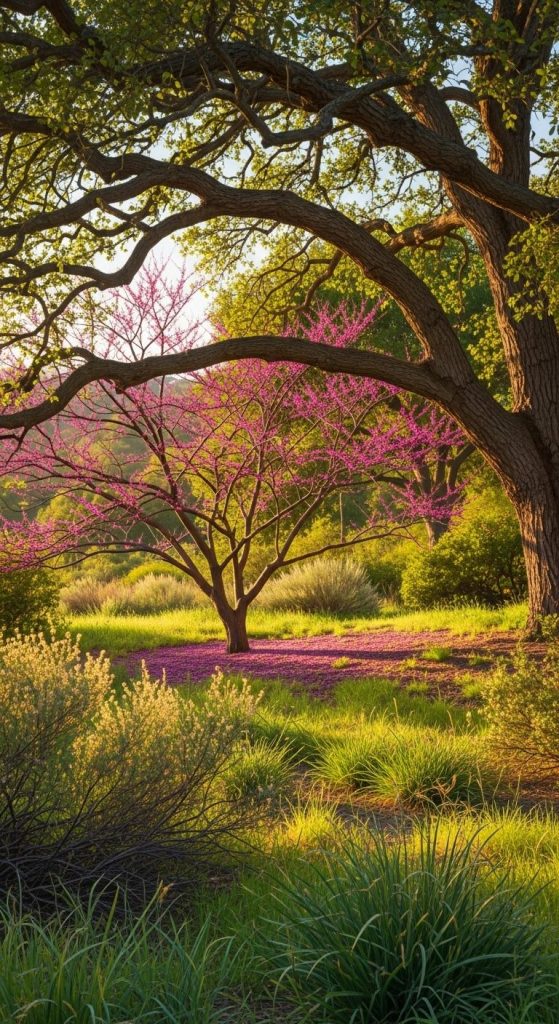
Trees like coast live oak, western redbud, or California sycamore define a landscape — offering shade, wildlife habitat, and timeless beauty.
Pros:
- Provides structure and longevity.
- Reduces home energy costs by cooling shade.
- Supports countless native species.
Cons:
- Needs space — roots and canopy spread widely.
Takeaway:
Planting a tree is a love letter to the future — few things are more rewarding.
12. Design for Wildlife Habitats
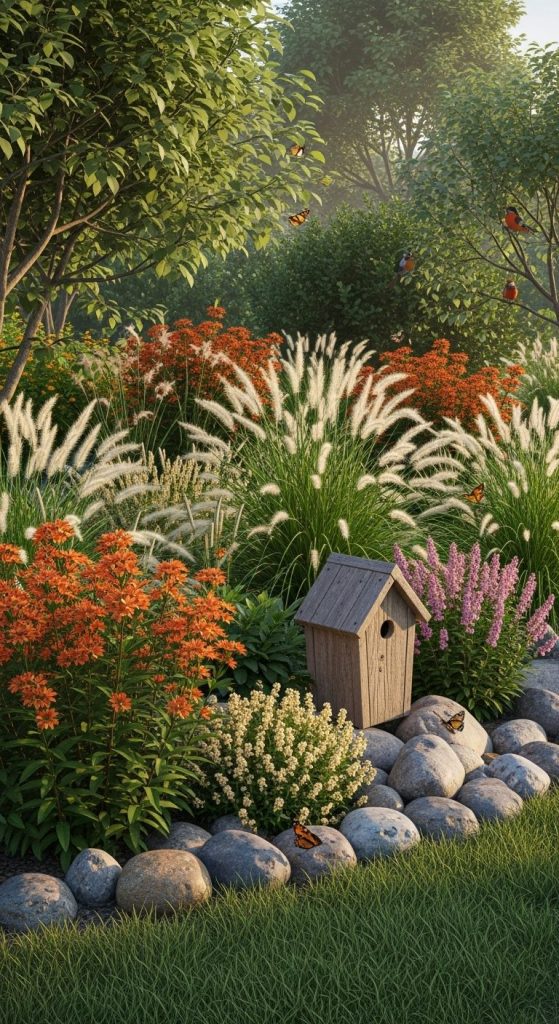
Native gardens can double as sanctuaries for local fauna — from butterflies to songbirds.
Pros:
- Creates a mini ecosystem right outside your door.
- Supports declining pollinator species.
- Adds life, movement, and sound to your space.
Cons:
- May invite critters like squirrels or rabbits.
Takeaway:
Your garden can be more than pretty — it can be a living refuge.
13. Build Natural Pathways and Seating Areas
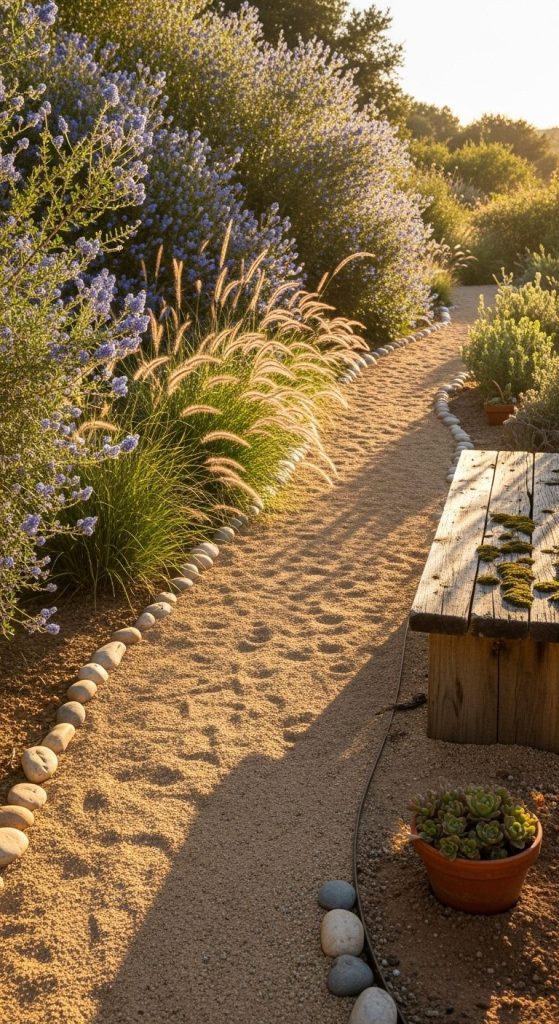
Use decomposed granite, flagstone, or woodchips to create meandering paths that encourage exploration.
Pros:
- Blends seamlessly into native landscapes.
- Provides structure without feeling artificial.
- Offers perfect flow for small or large gardens.
Cons:
- Needs occasional topping or maintenance.
Takeaway:
A path invites people (and pollinators!) to wander — it’s the soul of your native garden design.
14. Embrace Seasonal Change and Natural Aesthetics
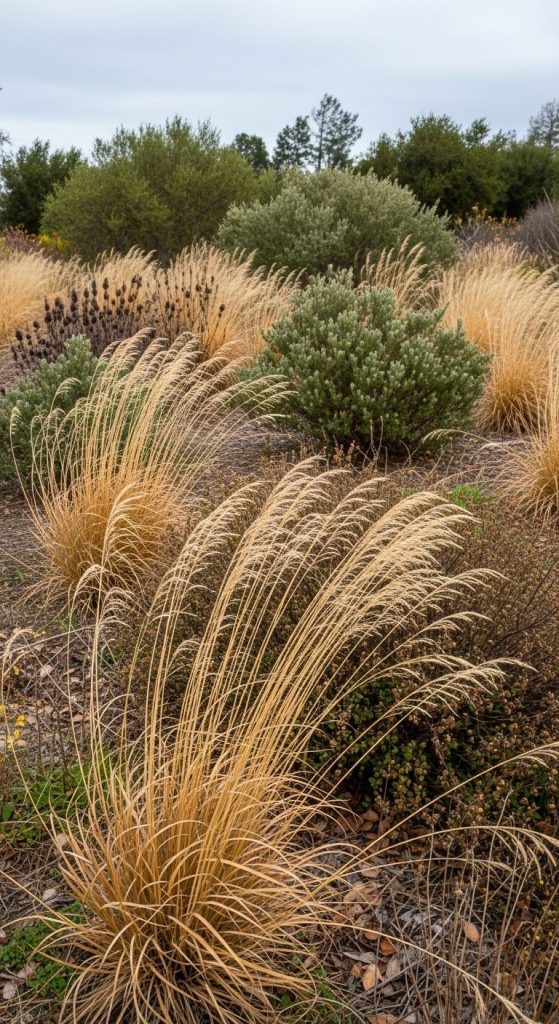
California native gardens evolve with the seasons — spring wildflowers, golden summer grasses, autumn seedheads, winter greens.
Pros:
- Always something new to enjoy.
- Encourages acceptance of natural cycles.
- Low-maintenance and authentic.
Cons:
- Some may find the dormant look “messy.”
Takeaway:
Beauty in a native garden isn’t constant — it’s cyclical, honest, and ever-changing.
15. Add Water Wisely — Birdbaths and Drip Irrigation
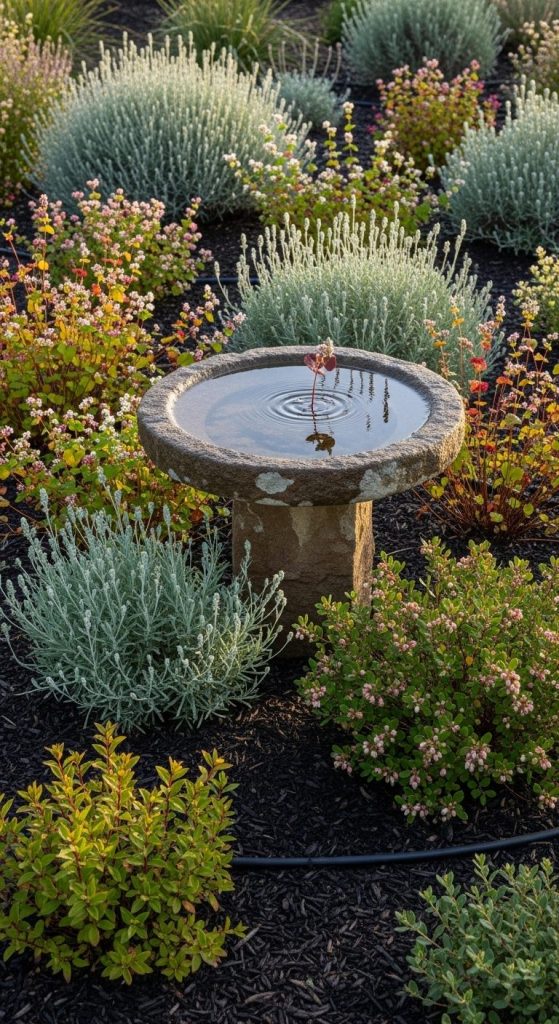
Even drought gardens need water sources — especially for wildlife. Use efficient drip systems and small birdbaths with native stones.
Pros:
- Attracts birds and pollinators safely.
- Maximizes water efficiency.
- Reduces waste through targeted irrigation.
Cons:
- Must clean birdbaths regularly to prevent algae.
Takeaway:
Water thoughtfully — just enough to sustain life, not excess.
Conclusion
Designing with California native plants is more than a trend — it’s a movement toward harmony with our environment. Each native garden tells a story of resilience, beauty, and balance. Whether you’re swapping your lawn for yarrow or planting an oak that will outlive you, you’re contributing to the future of California’s landscape.
In my opinion, the best part of native gardening isn’t how little work it takes — it’s how much joy it brings. The hum of bees, the scent of sage, the satisfaction of seeing life return — that’s a garden worth growing.

William Martin is a passionate bowler who spends most of his weekends playing the sport. With years of intense experience under his belt, William decided to share his knowledge by creating BOWLING OCEAN. Join me on this journey to explore the world of bowling and discover the tips and tricks to becoming a pro.


